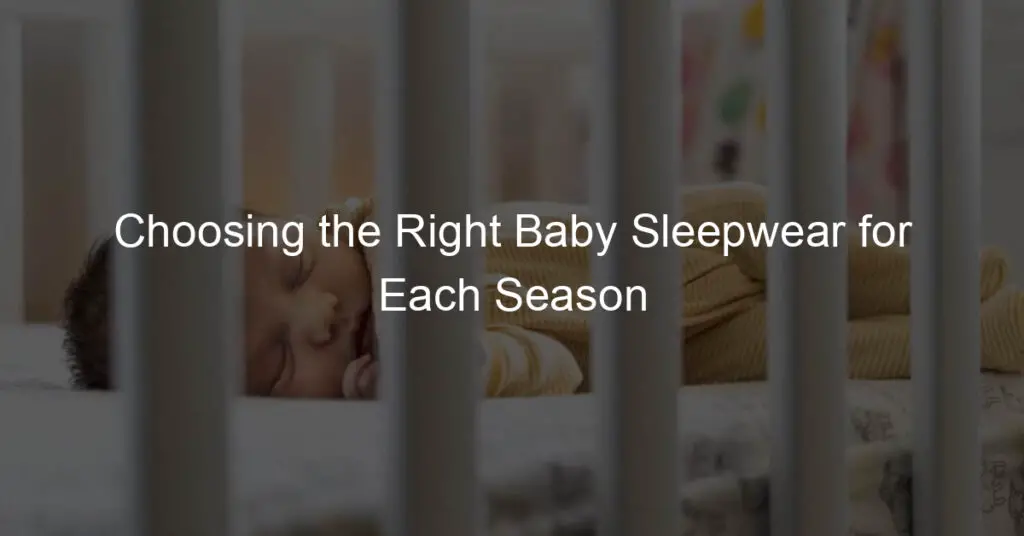Introduction: Baby Sleep Safety and Stuffed Animals
As parents, ensuring the safety of our little ones during their sleep is a top priority. This includes understanding the role of various elements in their sleep environment, such as stuffed animals. These cuddly companions can be a source of comfort for many children, but it’s crucial to understand their place in a baby’s life and sleep safety.
Understanding the Importance of Baby Sleep Safety
Sleep safety is a critical aspect of infant care. It involves creating a safe sleep environment to reduce the risk of sleep-related injuries or sudden infant death syndrome (SIDS). According to the American Academy of Pediatrics, there are specific guidelines for safe sleep practices that every parent should follow. These include placing the baby on their back for sleep, using a firm sleep surface, and keeping the sleep area free from potential hazards.
Role of Stuffed Animals in a Baby’s Life
Stuffed animals can play a significant role in a baby’s life. They can provide comfort, stimulate the senses, and even aid in social development. However, it’s important to note that while these fluffy friends can be beneficial, they should be introduced at the appropriate age to ensure safety. The Consumer Product Safety Commission recommends waiting until a child is one year old before introducing stuffed animals into the sleep environment.
In the following sections, we will delve deeper into understanding infant sleep patterns, the pros and cons of stuffed animals for babies, and when is the right time to introduce them. We will also look at a case study on baby and stuffed animal safety, before wrapping up with some advice on baby sleep and stuffed animals.
Understanding Infant Sleep Patterns

When it comes to understanding infant sleep patterns, it’s important to know that every baby is unique. However, there are some common stages and habits that most babies go through. Let’s take a closer look at these.
Stages of Baby Sleep Development
Infant sleep patterns evolve as they grow. Here are the general stages:
Newborn Stage (0-3 months): Newborns sleep a lot, typically 16-18 hours a day. Their sleep is divided into multiple naps throughout the day and night, as they need to feed every few hours.
Infant Stage (3-12 months): As babies grow, they start sleeping for longer periods at night and take fewer naps during the day. By 6 months, most babies sleep for about 14-15 hours a day, including two to three daytime naps.
Toddler Stage (1-3 years): Toddlers need about 12-14 hours of sleep a day, including one or two naps. By the age of 3, most children have given up their afternoon nap and sleep mainly at night.
Common Baby Sleep Habits
Babies develop various sleep habits, some of which are common across most infants. Here are a few:
Self-Soothing: Some babies learn to soothe themselves back to sleep. This could involve sucking their thumb, holding a favorite blanket, or cuddling a stuffed animal.
Co-Sleeping: Some babies sleep better when they share a room with their parents. This is known as co-sleeping.
Sleep Regression: At certain stages, a baby who has been sleeping well may start waking up more often at night or have difficulty falling asleep. This is known as sleep regression and is typically temporary.
Understanding your baby’s sleep patterns can help you create a better sleep environment for them. Remember, every baby is unique, so what works for one might not work for another. Patience and flexibility are key when it comes to managing your baby’s sleep.
Stuffed Animal for Babies: A Comfort or a Risk?

When it comes to babies, every parent wants to ensure their little one’s safety and comfort. One common item found in many nurseries is a stuffed animal. But is it a source of comfort or a potential risk? Let’s explore the benefits of stuffed animals for babies.
Benefits of Stuffed Animals for Babies
Stuffed animals can offer several benefits to babies, including:
Comfort and security: Stuffed animals can provide a sense of comfort and security to babies. They can serve as a familiar object that helps soothe a baby, especially during sleep or when they are away from their parents. According to a Wikipedia article, comfort objects like stuffed animals can help children handle stress and anxiety.
Development of affection and empathy: Interacting with a stuffed animal can help a baby develop feelings of affection and empathy. They often treat their stuffed animals as friends, showing care and love towards them. This can be an early step in understanding emotions and developing social skills.
Stimulating senses and motor skills: Stuffed animals can also aid in the development of a baby’s senses and motor skills. The different textures, colors, and shapes of stuffed animals can stimulate a baby’s sense of touch, sight, and even smell. Additionally, grasping and playing with a stuffed animal can enhance their motor skills.
While these benefits are significant, it’s essential to consider the potential risks associated with stuffed animals for babies, which we will discuss in the next section.
Potential Risks of Stuffed Animals for Babies
While stuffed animals can provide comfort and aid in the development of your baby, they also come with potential risks that every parent should be aware of. Let’s explore these risks in detail:
Suffocation Hazard
Stuffed animals, due to their soft and fluffy nature, can pose a suffocation risk for infants. Babies under the age of one year lack the motor skills to move objects away from their face. If a stuffed animal ends up covering their nose and mouth, they may not be able to breathe. According to the American Academy of Pediatrics, soft objects should be kept out of an infant’s sleep area to reduce the risk of SIDS (Sudden Infant Death Syndrome).
Allergy Triggers
Stuffed animals can also trigger allergies in babies. They can collect dust mites, which are common allergens. If your baby has a predisposition to allergies, exposure to these allergens can cause symptoms like sneezing, runny nose, and itchy eyes. Regular cleaning of stuffed animals can help reduce this risk.
Hygiene Concerns
Stuffed animals can become breeding grounds for bacteria and germs if not cleaned regularly. Babies often put objects in their mouth as a part of their exploration and learning. A dirty stuffed animal can expose them to harmful bacteria, leading to illnesses. It’s crucial to wash and dry stuffed animals properly to maintain their hygiene.
In conclusion, while stuffed animals can be a source of comfort for babies, they also pose potential risks. As parents, it’s our responsibility to ensure that our little ones are safe. Always monitor your baby while they are playing with stuffed animals and maintain the cleanliness of these toys.
Baby Sleep Guidelines: When is the Right Time?
One of the most common questions parents ask is, “When is the right time for my baby to sleep with a stuffed animal?” The answer to this question is not as straightforward as it might seem. It depends on several factors, including the baby’s age, developmental stage, and individual needs. Let’s delve into this topic to provide you with a clear understanding.
Age for Babies to Sleep with Stuffed Animals
Introducing stuffed animals to your baby’s sleep routine can be a comforting and soothing experience for them. However, it’s essential to know the right age to do this to ensure your baby’s safety.
Recommendations from health organizations: According to the American Academy of Pediatrics, it is safe to introduce a stuffed animal to your baby’s crib when they reach one year of age. This is because, at this age, the risk of Sudden Infant Death Syndrome (SIDS) decreases significantly. However, it’s important to ensure that the stuffed animal is small, lightweight, and doesn’t have any small parts that could pose a choking hazard.
Signs your baby may be ready: Every baby is unique, and some may show signs of readiness earlier than others. If your baby can roll over independently, sit without support, and remove objects from their face, they may be ready to sleep with a stuffed animal. However, always consult with your pediatrician before making this decision.
In conclusion, while stuffed animals can provide comfort and security for babies, it’s crucial to introduce them at the right time and in a safe manner. Always follow the recommendations of health organizations and look for signs of readiness in your baby. Remember, your baby’s safety should always be your top priority.
Safe Introduction of Stuffed Animals
Introducing stuffed animals to your baby’s environment can be a delightful experience. However, it’s crucial to ensure that these toys are safe and suitable for your little one. Here are some key points to consider:
Choosing safe toys for babies:
When selecting a stuffed animal for your baby, safety should be your top priority. Choose toys that are specifically designed for infants. These toys are usually made of soft, non-toxic materials and do not have small parts that can be a choking hazard. It’s also important to ensure that the toy is washable, as cleanliness is crucial to prevent the spread of germs. You can find more information about safe toys for babies on Wikipedia’s Toy Safety page.
Proper placement and supervision:
Placement of the stuffed animal in your baby’s crib or play area is another important safety consideration. Keep the toy at a safe distance from your baby while they’re sleeping to prevent suffocation. Always supervise your baby while they’re playing with the toy, especially during the early months. Remember, safety first!
Introducing a stuffed animal to your baby can be a wonderful way to stimulate their senses and provide comfort. However, it’s essential to do so safely to ensure your baby’s wellbeing. Always choose safe toys and supervise your baby while they’re playing with them.
Case Study: Baby and Stuffed Animal Safety
In this section, we will explore real-life examples of safe and unsafe practices when it comes to babies and their stuffed animals. We will also discuss the lessons learned and the key takeaways from these examples.
Real-life examples of safe and unsafe practices
Let’s start with a positive example. Sarah, a mother of a 6-month-old baby, always makes sure to keep the crib free of any stuffed animals when her baby is sleeping. This practice aligns with the SIDS guidelines and is a safe practice.
On the other hand, John and Lisa, parents of a 3-month-old, often leave several stuffed animals in their baby’s crib during sleep time. This is an unsafe practice as it increases the risk of suffocation and SIDS.
Lessons learned and key takeaways
The key takeaway from these examples is the importance of keeping the baby’s sleep environment safe. Stuffed animals can provide comfort, but they should not be left in the crib during sleep time, especially for babies under 12 months old.
Parents should also be aware of the size and type of stuffed animals they choose for their babies. Small parts or loose stuffing can pose a choking hazard. Always choose stuffed animals that are specifically designed for infants, as these are made with safety in mind.
In conclusion, while stuffed animals can be a source of comfort for babies, their safety should always be the top priority. It’s essential to follow safe sleep guidelines and to be aware of potential hazards when choosing stuffed animals for your baby.
Conclusion: Baby Sleep Advice and Stuffed Animals
As we wrap up our discussion on baby sleep safety and the role of stuffed animals, it’s important to revisit the key points we have covered. This will not only reinforce our understanding but also guide us in making informed decisions for our little ones.
Recap of baby sleep safety guidelines
Ensuring your baby’s safety during sleep is paramount. We’ve learned that it’s crucial to lay your baby on their back to sleep, in a crib free of pillows, blankets, and toys. This reduces the risk of Sudden Infant Death Syndrome (SIDS). It’s also important to maintain a comfortable room temperature and dress your baby appropriately to avoid overheating. Regularly checking on your baby during sleep is also advised. You can read more about baby sleep safety guidelines on Wikipedia.
Final thoughts on when your baby can sleep with a stuffed animal
Stuffed animals can provide comfort and security for your baby. However, introducing them too early can pose a risk. As we have discussed, it’s generally safe to introduce a stuffed animal when your baby is around 12 months old. This is when they have developed enough motor skills to move the stuffed animal away if it obstructs their breathing. However, it’s always best to consult with your pediatrician to make an informed decision based on your baby’s development and individual needs.
In conclusion, while navigating the journey of parenthood can be challenging, being equipped with the right information can make the process smoother. Remember, every baby is unique, so what works for one may not work for another. Always keep your baby’s safety as your top priority and don’t hesitate to seek professional advice when in doubt.














